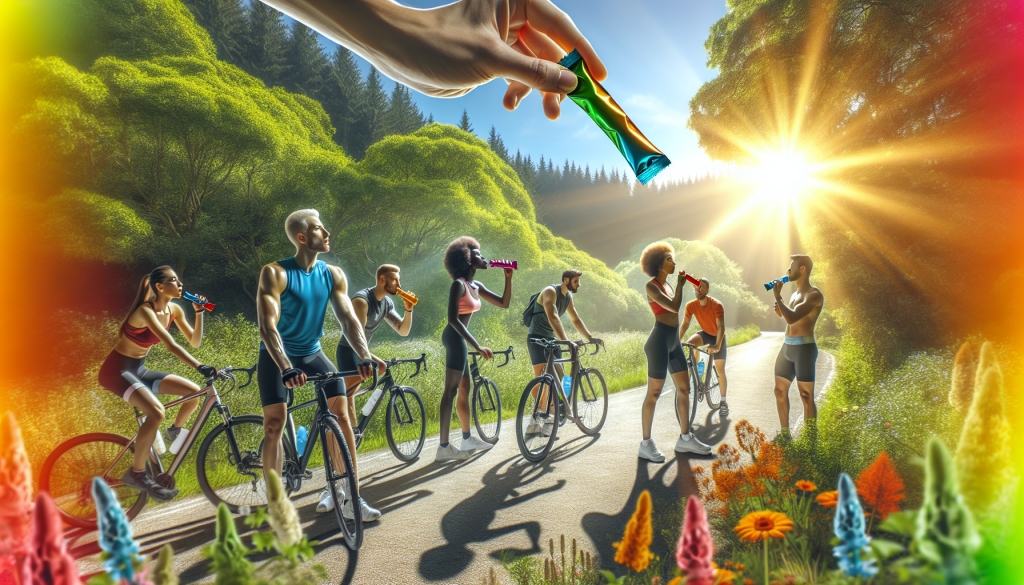Top 5 Energy Gels for Bicycle Touring: Fuel Your Ride with the Best Options
Long rides take a toll. Fatigue hits hard when you’re climbing hills, fighting wind, or pushing toward camp. That’s when energy gels become lifesavers. They’re fast fuel — portable and easy to digest, even on the move.
When you’re biking 50, 100, or more miles a day, your body needs quick carbs and electrolytes. But not all gels are created equal. Some offer tastier flavors. Others include caffeine for an extra kick. Let’s look at the top 5 energy gels for bicycle touring and how to choose the right one for your ride!
Why Energy Gels Are Essential for Bicycle Touring
- Quick carbs and electrolytes: Fast fuel when your tank feels empty
- Portable and easy to use: No need to stop or unwrap bulky snacks
- Prevent “bonking”: Stops that crash from low energy mid-ride
- Supports endurance: Helps maintain stamina on long-distance routes
What to Look for in an Ideal Energy Gel for Cycling
- Carb type and amount: Simple sugars for quick energy, complex carbs for sustained fuel
- Electrolyte content: Ingredients like sodium and potassium help with hydration
- Caffeine options: Adds kick—great for late-day boosts (but not for everyone)
- Flavor and texture: Gels come in many tastes; find one you can tolerate (and enjoy!)
- Easy-open and eco packaging: Avoid frustration and support low-impact touring
Top 5 Energy Gels for Bicycle Touring
a. GU Energy Gel
- Carbs: 21–23g per packet
- Electrolytes: Includes sodium and optional amino acids
- Caffeine: Some flavors contain 20–40mg
- Best for: Endurance rides and race-day use
- Pros: Wide flavor range, steady energy release
- Cons: Can be thick—follow with water
b. Clif Shot Energy Gel
- Carbs: 24g per packet
- Electrolytes: Good sodium content
- Caffeine: Options up to 100mg
- Best for: Hilly rides, big climbs
- Pros: Big kick, thicker gel, fast acting
- Cons: Bold flavors may be intense for some
c. SIS GO Isotonic Gel
- Carbs: 22g per pack
- Electrolytes: Low, but doesn’t require extra water
- Caffeine: Available, but limited range
- Best for: Hot days and high hydration needs
- Pros: Light texture, very drinkable
- Cons: Larger packet size
d. Honey Stinger Organic Energy Gel
- Carbs: 23g per pack (from honey)
- Electrolytes: Contains potassium; no added sodium
- Caffeine: Available in some flavors
- Best for: Natural eaters and casual riders
- Pros: Organic ingredients, smooth texture
- Cons: Sweetness may not suit all tastes
e. Hammer Gel
- Carbs: 21–27g per serving (multi-use pouch)
- Electrolytes: Moderate sodium, no potassium
- Caffeine: Wide range available
- Best for: Long multi-day tours, cost-conscious riders
- Pros: Economical, less sweet, refillable packets
- Cons: Needs a gel flask or bottle to use
How and When to Use Energy Gels on Long Rides
- Before: Take a gel 15–30 minutes before starting hard effort
- During: One gel every 45–60 minutes, depending on intensity
- After: Use with protein for better recovery
- Drink water: Always drink water when taking gels (unless it’s isotonic)
- Mix with other fuel: Use bars or fruit to keep variety and avoid sugar overload
- Avoid gut issues: Test gels in training to see what your stomach can handle
Natural & DIY Alternatives to Commercial Energy Gels
- Homemade options: Mix honey, sea salt, lemon juice, and chia seeds
- Real food: Try bananas, dates, or natural fruit puree pouches
- Eco-friendly options: Reusable soft flasks reduce trash
- Budget tip: DIY or bulk gel packs cost less over multi-day tours
Conclusion
Energy gels make bike touring smoother — and longer rides more fun. They fit in your pocket, deliver fast energy, and help you recover. Whether you like thick gels like Clif Shot, lighter ones like SIS GO, or natural picks like Honey Stinger, there’s something for everyone.
Not every gel works for every cyclist. Test a few. Learn what you like. Find what your body runs best on. Then hit the road!
Have a favorite gel or recipe? Drop it in the comments! And don’t forget to sign up for our newsletter for more tips, reviews, and bike touring hacks.
